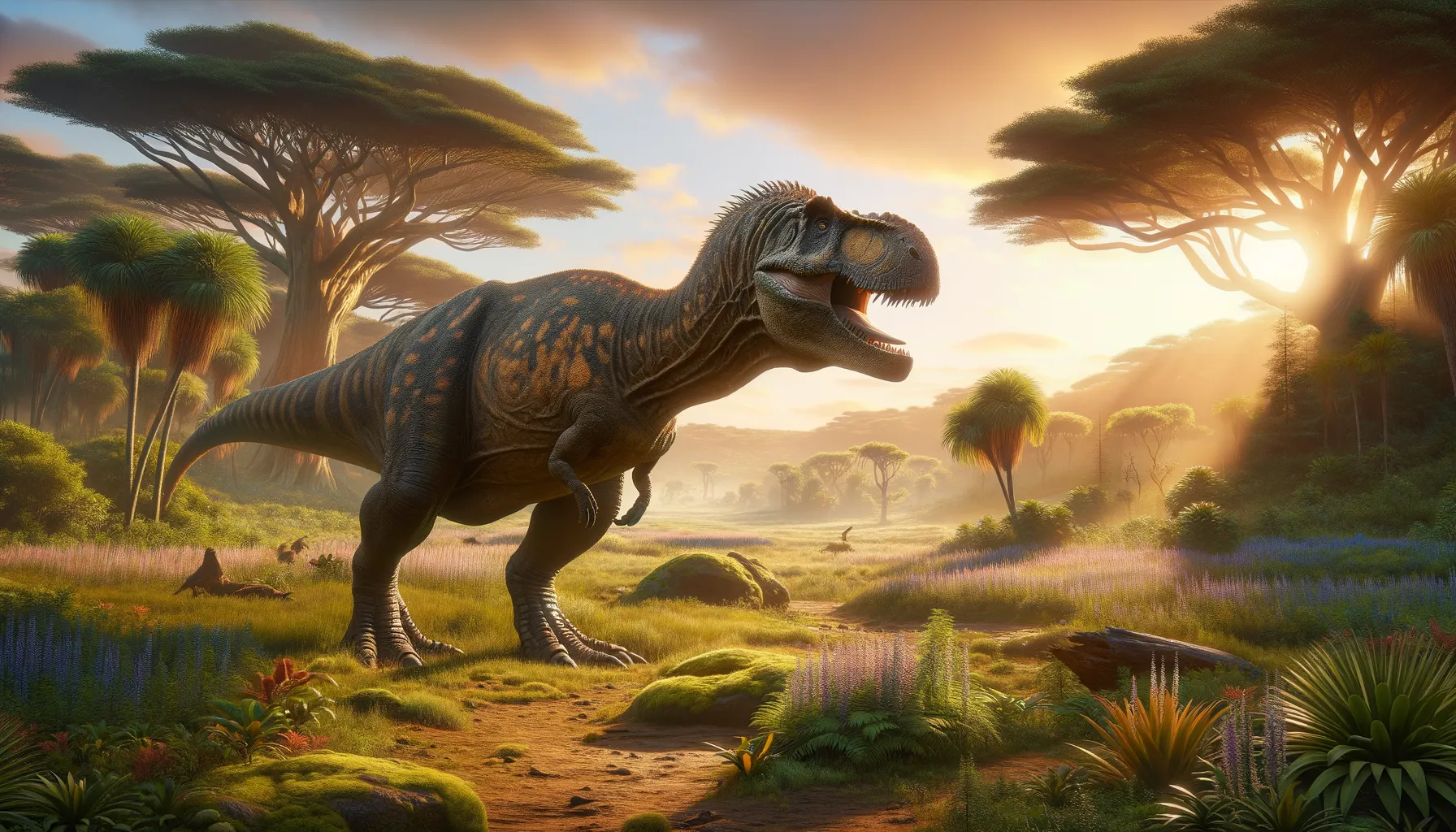
Kangnasaurus
A survivor of ancient African landscapes.
Period
Cretaceous
Length
Measured around 5 meters in length.
Height
Approximately 2 meters tall at the hips.
Weight
Estimated to weigh around 450 kilograms.
Kangnasaurus is an intriguing dinosaur from the early Cretaceous period, primarily found in what is now South Africa. It was a herbivorous dinosaur that roamed prehistoric painted plains and woodlands, showcasing unique features that contributed to our understanding of dinosaur diversity in southern Africa. With moderate speed and size, Kangnasaurus represents a fascinating chapter of Earth's ancient past, exploring rich vegetation while facing environmental challenges that shaped its evolution and survival.
Diet
Kangnasaurus was a herbivore, meaning it primarily fed on plants. Its diet likely included a variety of ancient ferns, cycads, and coniferous vegetation available in its habitat.
Hunting
As a herbivore, Kangnasaurus did not engage in hunting. Instead, it foraged for food, using its jaws to clip plants and leaves efficiently. Gathering food in groups might have benefited from social interactions.
Environmental challenges
Kangnasaurus faced fluctuating climates that altered its habitat over time. Periods of drought would have tested its ability to find adequate food and water. Additionally, it had to navigate through coexisting with predators, using its environment for protection.
Speed
Moderate; likely not a fast runner.
Lifespan
Could have lived about 30 to 40 years.
First discovery
Discovered in South Africa in the early 20th century.
Fun Facts
- Kangnasaurus was a dinosaur that lived around 100 million years ago during the Cretaceous period.
- Its name, Kangnasaurus, means 'Kangna lizard,' named after the Kangnas farm in South Africa where its fossils were first discovered.
- Kangnasaurus was a small herbivorous dinosaur, which means it primarily ate plants.
- This dinosaur is known from only a few fossil remains, making it a bit of a mystery to paleontologists.
- Kangnasaurus is an example of how dinosaurs were spread across different regions, even in what is now Africa.
- The discovery of Kangnasaurus helped scientists piece together the puzzle of dinosaur evolution in the southern hemisphere.
- Kangnasaurus belonged to the ornithopod group of dinosaurs, which were known for being good runners.
Growth and Development
Kangnasaurus likely experienced a typical growth pattern shared by many dinosaurs, starting off small and gradually increasing in size. Juveniles would have grown under the protection of adult groups or herds. The species adapted through its life stages to optimize survival capabilities.
Habitat
This dinosaur inhabited the rich ecosystems of early Cretaceous South Africa, a mixture of lush forests and open plains. Its environment provided abundant plant life, supporting its herbivorous diet. Seasonal variations would have played a role in migration patterns or habitat selection.
Interaction with other species
Kangnasaurus most likely coexisted with other herbivorous dinosaurs and various predators. It might have engaged in defensive behaviors to protect itself and its group when threatened by carnivorous species. It contributed to the ecosystem by participating in the plant cycle through its foraging activities.
Natural lifespan
Its natural lifespan could have been around 30 to 40 years.
Reproduction
Kangnasaurus likely reproduced by laying eggs in nests strategically located in safe areas. The species might have exhibited some level of parental care, ensuring the young survived until they could fend for themselves.
Social behaviour
Evidence suggests that Kangnasaurus lived in groups or herds, a behavior that enhances protection against predators. This social structure allowed them to communicate and coordinate movements, thus increasing their chances of survival in a dynamic environment.
Fossil locations
Fossils of Kangnasaurus have been primarily found in South Africa, providing insight into its geographical range. These finds contribute significantly to the understanding of dinosaur distribution in the southern hemisphere during the Cretaceous period.
